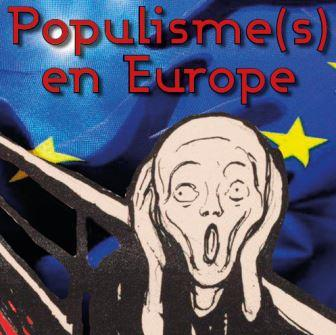The year 2017 was expected to be marked by the overwhelming victory of populist parties throughout Europe, but that is not what happened. Will we see the same scenario in 2018? It’s highly likely that we won’t.
While 2016 was the year where populism took everyone by surprise, 2017 was anticipated as the year of populist victory.
All eyes were on the “populists” with elections scheduled in Austria, France, Germany, and the Netherlands, to name just the most significant countries. These populists come from the far right in the majority of countries.
The dominant narrative of bold populism, victorious against the status quo fiercely defended by an elite, initially surfed on the wave of the legislative elections in the Netherlands in March. Prime Minister Mark Rutte emerged victorious on the political level, although he lost electorally by adopting the rhetoric and part of the program of the Party for Freedom. Rutte declared that his “good populism” had defeated Wilders’ “bad populism,” and international media echoed his words.
Nevertheless, it was the French presidential elections the following month that constituted the real test for the dominant narrative, as they were the only election of the year where the winning candidate had to win it all. Marine Le Pen soared to the top of the polls of the most popular politicians in France in previous years.
Ultimately, she recorded results below expectations in both rounds, partly due to her disappointing campaign and disastrous performance during the televised debate where she was literally overwhelmed by Emmanuel Macron, the new star of European politics. He also dominated the parliamentary elections that followed.
The German legislative elections in September which followed symbolized the moment of truth for “populism.” Would Merkel triumph by dealing the fatal blow to populism, or would the far-right populist party Alternative for Germany (AfD) end her twelve years as chancellor?
The AfD achieved the second-best result for a third party in recent history, but Merkel and her party, the CDU/CSU, remained by far the leading party on the German political scene.
The Austrians held legislative elections just a few weeks later.
Sebastian Kurz, the young Austrian Foreign Minister, was the big winner of these elections as he succeeded in transforming his conservative ÖVP party into a personalized political vehicle, somewhat similar to Macron’s method in France.
On the other hand, he won by adopting the “good populism” strategy employed by Rutte in the Netherlands, campaigning on his authoritarian and nativist response to the alleged migrant crisis. But Kurz was in total contradiction with other countries that had all ostracized the radical populist right by inviting the FPÖ into the government.
This brings us to 2018, a year in which many European countries, whose populist parties are powerful and well-established, including Hungary and Italy, will head to the polls. What can we expect, learning from 2017?
Firstly, no generalization is possible, given that Europe is a continent, not a country. National elections are primarily national! Therefore, the Hungarian election will depend on Hungarian factors, such as the internal division of the opposition, and the Italian elections will be influenced by what happens on the peninsula, from Syracuse to Venice, notably on the burning issue of refugees.
Secondly, populism will continue to play an important role in European elections, particularly in regions where populist parties were already influential ten years ago.
Thirdly, whatever the actual results of the populist parties, they will be reported disproportionately by international media.


